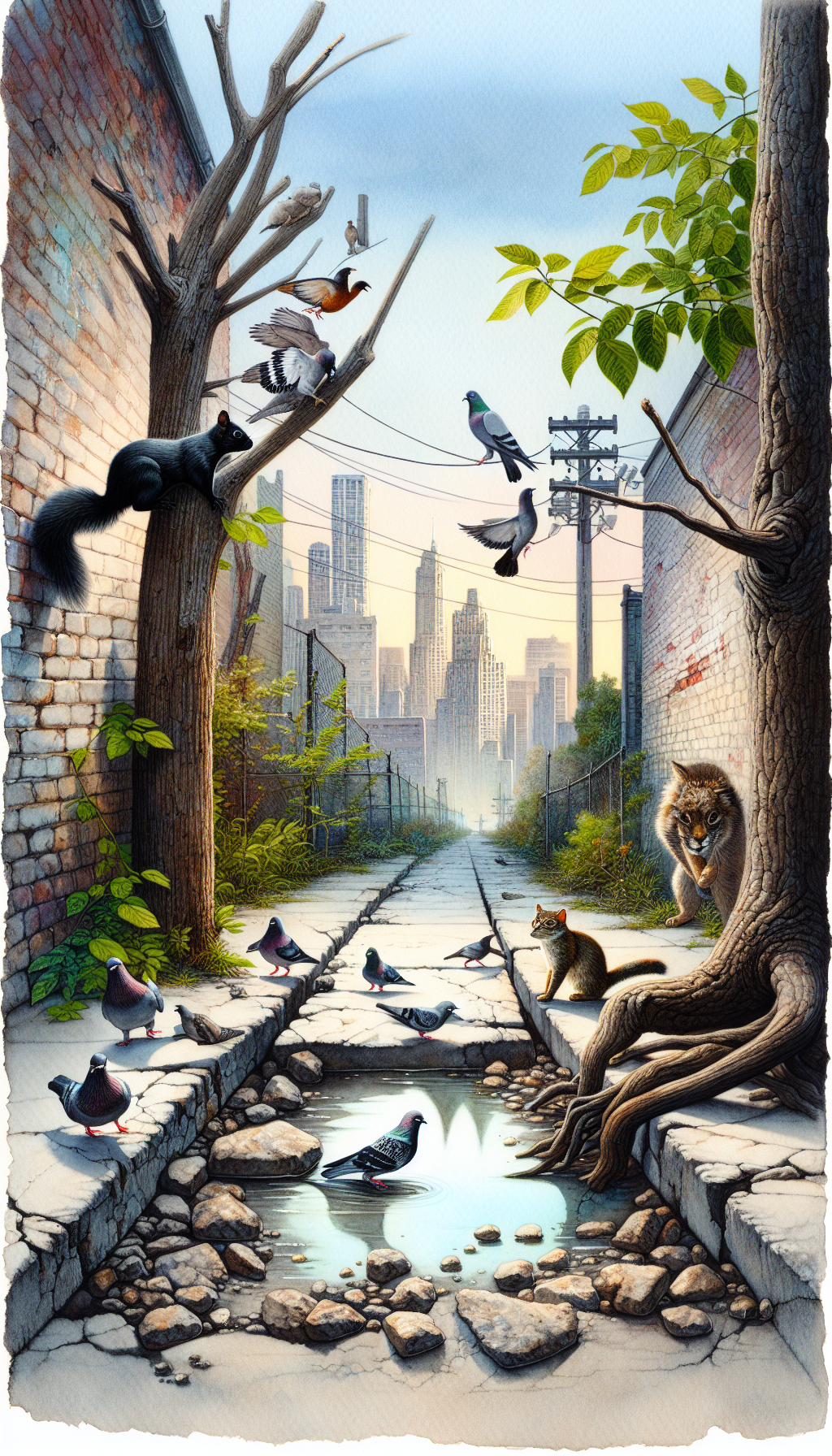Indeed, the rapid urbanization of our world has had a profound impact on the wildlife living in these areas, but what may surprise most is the resilience and adaptability these creatures have shown. From crafty raccoons navigating trash bins to birds of prey nesting atop skyscrapers, urban wildlife has learned to thrive amidst the hustle and bustle of city life.
Cities worldwide are currently experiencing a surge in their wildlife populations, with an assortment of species adapting to urban living conditions.
This is largely due to the variety of food sources and habitats created by the urban environment. City parks, gardens, and vacant lots provide essential green spaces for wildlife, while buildings often simulate the cliffs and caves that many species naturally inhabit.
Take, for instance, the peregrine falcon. This bird of prey, once endangered, has found a new lease on life in many major cities. The tall buildings mimic their natural, cliff-side nesting sites and the plentiful pigeon population provides them with a steady food source.
Similarly, raccoons have adapted to urban environments by capitalizing on the abundance of food waste in cities, showcasing an uncanny knack for navigating trash cans and dumpsters.
However, this cohabitation is not always peaceful.
As wildlife populations grow, so too do the instances of human-wildlife conflict. Foxes rummaging through trash, deer grazing in gardens, and geese nesting on busy roads are just some examples of how urban wildlife can disrupt city life.
Education and sensitization are key in mitigating these conflicts. Understanding the behaviors and habits of these creatures can help us coexist more harmoniously.
For example, securing trash bins and minimizing food waste can significantly reduce wildlife encounters. Using wildlife-friendly planting and discouraging nesting in high-traffic areas can also go a long way.
Moreover, urban wildlife can play an crucial role in our ecosystems. Bees, butterflies, and birds all contribute to pollination, while scavengers like crows and raccoons help to clean up waste. These species, amongst others, provide invaluable ecological services that often go unappreciated.
As we continue to urbanize, it’s more important than ever to consider the impact on our local wildlife and acknowledge the role they play in our urban ecosystems. Many cities have recognized this and are prioritizing green spaces and implementing wildlife-friendly policies.

Recently, the concept of ‘rewilding’ has gained momentum. This involves reintroducing native species and restoring natural habitats within urban settings. Not only does this benefit wildlife, but it also enhances the urban landscape and promotes biodiversity.
Indeed, living in a city doesn’t mean we have to be disconnected from nature. From watching squirrels in the park to spotting a falcon soaring above the cityscape, urban wildlife provides a unique opportunity to connect with nature in our daily lives. By recognizing and accommodating these creatures, we can foster a healthier, more vibrant urban ecosystem – a testament to the resilience of nature amidst the concrete and steel of our urban landscapes.
In this interconnected world, it’s clear that urbanization and wildlife are not mutually exclusive but can, in fact, forge a harmonious coexistence. The continued presence of wildlife in our cities serves as a reminder of the delicate balance between progress and preservation, a balance that we must strive to maintain.